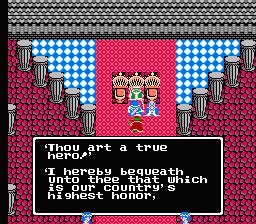Quarantine Control #8: Chase the Messenger

Territories around the world are pressing through with plans to reopen their economies, regardless of whether they’re ready for it or not. They’re encouraging social distancing, but that doesn’t do much when people don’t adhere to those suggestions, which has already happened several times within a short time span. South Korea’s recent spike in cases has shown that one person can ruin things for everyone for indoor gatherings. That’s why it’s still best to spend more time at home to protect yourself and others around you, especially when they’re vulnerable. This blog’s writers are doing that as much as we can, which is why we’re still discussing the entertainment we’re watching.
Geoffrey Barnes
Star Wars: The Clone Wars — Seasons 2 & 3
Source: Disney+
Episodes: 44 (22 each for the second and third seasons)
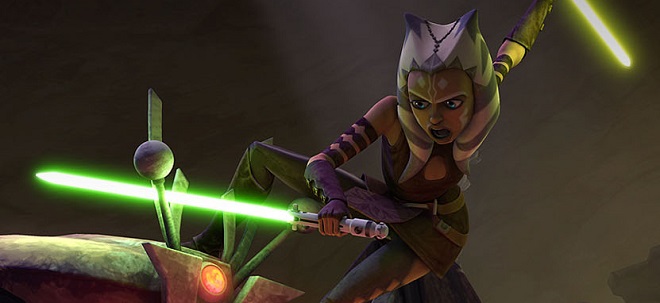
I mentioned in last week’s post that I finally got around to Star Wars: The Clone Wars after watching its first season, and somewhat understood what I’ve been missing out on for so long. It was an entertaining season despite it not finding the tone it wanted until the second half. But this led to the writers and directors fully knowing what direction they wanted to go with the narrative, arcs, and character usage in the second and third seasons, and both highly benefit from that. Digging further into the show has made me feel bad about not seeing it until now, as someone who extracted moderate (yes, non-ironic) enjoyment from Attack of the Clones and Revenge of the Sith despite their shortcomings. There was no time like the present to tackle it, now that I have more time at home.
The first season focused on the exploits of Anakin Skywalker, his apprentice Ahsoka Tano, and Obi-Wan Kenobi, which continues here. But like the first season, the series doesn’t focus on them to the point of overbearing annoyance, with the show making sure to provide development for characters and troops that only briefly appeared in the movies this takes place between. This season also provides new intriguing characters that have histories with the main ones, like Satine Kryze, the current leader of the Mandalorians and clearly an old flame for Obi-Wan.
The animation is noticeably improved between seasons — and again halfway through the third season. The first season’s animations were jerky and unpolished, though not bad per se. They flow better in the second season, and even more so in the third season, particularly after the Jedi receive their traditional robes instead of the awkward (though easier to animate) armor. I had more trouble than I expected adjusting to the early animation thanks to watching Rebels first, a point which, I know, makes me sound superficial as all hell, but it’s now at a point where the animation flow isn’t bothering me.
It’s refreshing how far these seasons go with tackling the politics surrounding the Galactic Republic and the Separatists, much further than the movies. Debates about allocating further funding for military spending and making sure education and the social safety net aren’t ignored happen within the Galactic Senate, along with approving military deployments to other planets. Padme Amidala is frequently a focus in these along with Chancellor Palpatine, while comparatively minor characters like Bail Organa and Mon Mothma are around.
Nothing’s quite as entertaining as the further exploits of the Republic and the Separatists around the galaxy, clearly the focus. There are a lot of fights between the Jedi and the Clone Troopers against the Droid Army with General Grievous and Count Dooku, but other characters like bounty hunter villain Cad Bane get a fair amount of attention too. And here the series looks even more beautiful while presenting that story in terms of the animations, the lightsaber and blaster fights, and the lush and desolate planets themselves. I’m at about the halfway point for Clone Wars now, and I’m not stopping here.
The Messenger
Source: PlayStation 4
It’s a video game
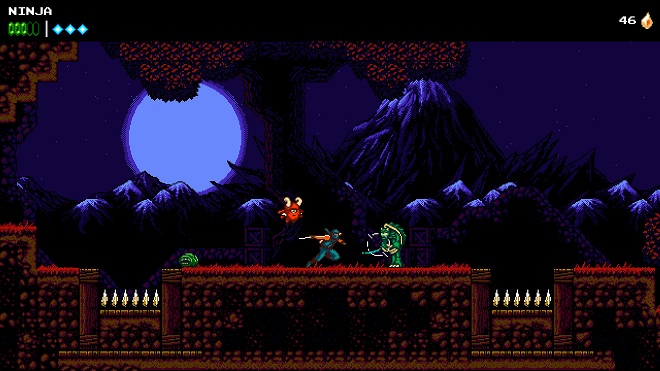
I had high hopes for The Messenger before playing it, which the game delivered on for a while. The trailers and screenshots made it resemble the successor to the NES/Famicom Ninja Gaiden games, a concept I was hoping an indie developer would tackle for years. The game’s Messenger treks through mostly-linear stages (with some secret paths) with alternating themes, including a cave, a poison-infested forest, and a cavern drenched in fire and lava. There’s nothing original here, nor does there need to be.
I said it’s “largely” similar to Ninja Gaiden before because it doesn’t have any obstacles on par with the more notorious ones from those old games. It helps that this ninja is more flexible in his move set than NG’s Ryu Hayabusa. Checkpoints are also more frequent, and lives are infinite. These all significantly reduce the levels of frustration compared to many old NES titles. But this was special because no 2D ninja game since has come close to channeling those titles until this one.
Ah, if only the experience remained this way. There’s a big twist halfway through where it transforms into a nonlinear Metroidvania title, where the Messenger ventures back through the earlier stages to search for secrets. It’s very difficult for level designers to create stages for linear and nonlinear purposes, and Sabotage Studio was not up to this task. Trekking back across the stages feels like a chore, a clear way to pad out the game’s length.
This is coming from someone who enjoys Metroidvania games, and thought the twist sounded good when I heard about it before playing. Reexploring the levels with powers obtained in later stages also sounded fun. Here, though, it doesn’t work. It would have been better off if the game design remained consistent, by including more linear stages or making the entire experience nonlinear. There’s a chance it was made this way because resources were stretched thin later in development, but the team wanted to make an experience that felt fulfilling. If that’s the case, I sympathize with them, but longer games in general don’t always make for better products.
I’m disappointed that I didn’t like the Messenger more, but there’s hope with more ninja throwback games on the horizon. Yacht Club Games is publishing Cyber Shadow later this year and the crowdfunded Bushiden is on the way — though the latter looks to have more in common with Shinobi than Ninja Gaiden. Fortunately, the Messenger’s developers at Sabotage Studio are working on another project, and hopefully the also-crowdfunded Sea of Stars will maintain consistency by being a notable homage to 16-bit Japanese RPGs — especially Chrono Trigger.
Joseph Daniels
As of late, I’ve been watching a lot of British game shows. I’ve also been watching the current celebrity season of Who Wants To Be A Millionaire?, and I’ve never seen a celebrity contestant in any game show as bad as Dr. Phil, except possibly Wolf Blitzer on Celebrity Jeopardy!
Something I’ve noticed about American game shows is that recently, there’s been a trend of reviving older game shows which are still considered popular. Press Your Luck is returning this summer, and the celebrity version of Who Wants To Be A Millionaire? restores most of the original rule set from the Regis Philbin era of the show, including the removal of the time limit imposed on each question in later versions. This led to fifteen minutes of Dr. Phil agonizing over a simple geography question that needed to be edited out in order to allow for his episode to end on time.
Most of the game shows that debuted in the United States during the time period after Who Wants To Be A Millionaire? became popular have since disappeared, which says something about the lasting power of the modern American game show. Often augmented with style and flashiness to hide the lack of substance, most game shows like Russian Roulette on GSN, Million Dollar Money Drop on FOX and Identity on NBC never lasted.
Now, while I’m about to sing the praises of three different British game shows, it should be noted that not even the United Kingdom is immune to making a stinker or two, but today I’m here to recommend three British game shows to help you through this Quarantine. All three of these shows are available in whole or in part on YouTube thanks to the questionable legality of fans uploading episodes, and all three of these shows are still currently in production.
The Chase (2009)
Hosted by Bradley Walsh
Source: ITV
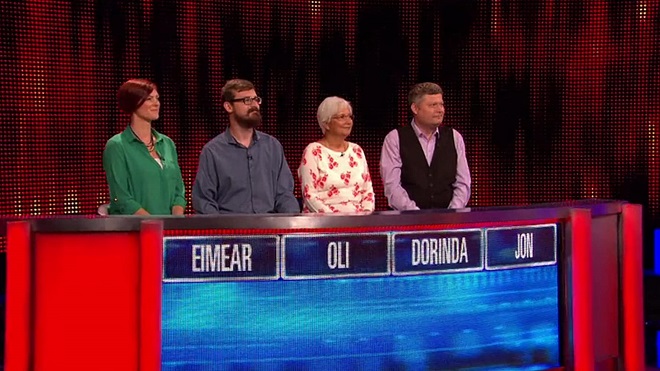
Each of four contestants on a team begin with a lightning round of questions to accumulate money, earning a thousand pounds per question. After a minute of quick trivia, the contestant faces one of several chasers chosen to compete in the episode who are trivia champions. For every question a player gets correct during the chase – and questions in this round are multiple choice – they get one step closer to safety. For every question the chaser gets right, the chaser pursues the player, and if the player is overtaken by the chaser, they end up going home. Before this round, the chaser offers an incentive to start one step closer to danger, and a lower prize for starting one step closer to safety.
In the final round, those players who have banked money play during a two minute lightning round and try to answer as many questions as possible. Each question answered correctly will add one more question to the number that the chaser has to answer in the same amount of time. Each question the chaser gets wrong stops the clock, the contestants can then answer the question correctly and if they do so, they push the chaser back a step. If the chaser manages to overtake the team, the money is unfortunately gone.
It’s a pretty simple premise and is enjoyable to watch. A little more complicated, is…
Only Connect (2008)
Host: Victoria Coren Mitchell
Source: BBC Two (Formerly on BBC Four)
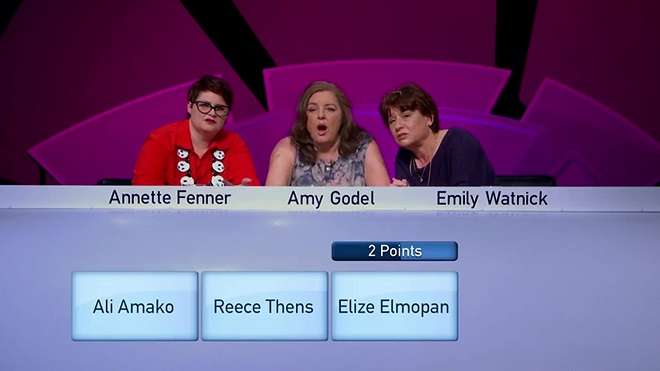
Oh boy, how do I describe this game? Each season is formatted like a tournament between teams of three players. These teams play against each other and… I wish I could describe how the teams were eliminated, but the series keeps on changing the tournament format of each season. Ultimately, in the final episode of each season, the two teams that have avoided elimination for the entirety of the season face off against each other to find out which team is the best of the season. There have also been episodes bringing back the winners of past seasons to compete against one another.
Each round contains its own rules. The first round is all about connections and you can earn points depending on how many clues you’ve asked for. Contestants have forty seconds per category, and figuring out the category after only one clue is worth five points. With two clues, the category is worth three, and with a third clue, the yield is two points. One point is available if all four clues are played. I’ll give an example.
Ammonia. Angel’s Tear. Zetasol. Phoenix Down. The connection here is that they’re all items used to resurrect characters in a video game, and the one that is most recognizable as such is always the last one to be revealed.
There are six of these to play in the first round, one of which is an audio category with sound clips and one of which is a visual category with pictures to play. The second round is similar to the first, except the fourth clue is missing and players have to come up with it. Here’s an example:
The first clue is Cloud. The second clue is Squall. The third clue is Zidane, so the fourth answer is Tidus because the category is Final Fantasy leading men in order starting from Final Fantasy VII (ignoring Ramza from Tactics).
There are six of these categories to play in the second round, and although there is no audio category this time, there is still a video category. In either of these rounds, teams alternate playing categories and if a team can’t figure it out, the other team gets a crack at it.
After two rounds, each team plays the Connecting Wall round. I’m not even going to try to come up with an example for it, because each wall consists of sixteen items and must be organized into groups of four. Often, there can be several items that can pertain to more than one group, but it’s up to the contestants to figure out the four categories and which items go into which categories.
The final round is a missing vowels round, where both teams compete on the buzzer to answer puzzles correctly. When the time is up, the team who has scored the most points over the course of the episode through all four rounds is the winner.
A missing vowels category could be something like single named singers, and the answer to the puzzle “DL” would be “ADELE”, “MDNN” is “MADONNA” and “SL” becomes “SEAL”.
This was a bit complicated, so here’s a much simpler one to round things out:
Tenable (2016)
Host: Warwick Davis
Source: ITV

There are currently 200 episodes of this series plus 4 special episodes, not all of which can be seen on YouTube unfortunately. But what episodes are up are also fun to watch. Warwick Davis might be familiar to anyone who has seen the movie Willow, and he is entertaining as the host of the show.
The format of the show is basically top ten lists, and a team of five players must come up with items that are present on each list. Each player on a team of five plays their own list of ten and if they can name five or more items on their list, they can bank money for their team and make it to the final round. Each top ten list allows for one wrong answer, but a second wrong answer eliminates the player. The team captain doesn’t get eliminated no matter what, and during their top ten list, if they fulfill the requirements, they can choose to bring back their eliminated teammates. In the final round, they play for the money they’ve banked and answer the final list as a team, each player taking a turn to name one item on the list. The team is not allowed to discuss amongst themselves, though.
An example of a top ten list could be The First Ten Movies Made By Walt Disney Animation Studios. The list would then be:
1) Snow White and the Seven Dwarfs
2) Pinocchio
3) Fantasia
4) Dumbo
5) Bambi
6) Saludos Amigos
7) The Thee Caballeros
8) Make Mine Music
9) Fun and Fancy Free
10) Melody Time
Answering any other film, like The Adventures of Ichabod and Mr. Toad or Cinderella would be “untenable” answers. If the team can answer everything on the final board correct, they win the money they’ve banked, but if all five players are eliminated for each guessing a wrong answer, they don’t win the money.
More often than not, I’ve seen a team not manage to answer all ten items on the final list, and unfortunately this means there are very few teams that actually won money from the show. It’s also agonizing seeing teams answer nine of the ten items correctly and fail to figure out the tenth.
These are three of my current favourite British game shows, and although I might not always know the answer, the point of watching them is to have fun, even if you can’t answer everything. I do wish that… actually, this is getting a bit long. I’ll save it for a Random Roar.
It’s sobering to think, but the coronavirus is going to be with us for a while. The comparatively minimal good news here is how we’ll be able to maintain this feature for several more weeks in the future, because the staffers here (three of us, anyway) always have entertainment to discuss for it. See you next week.





